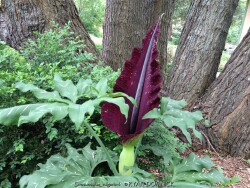
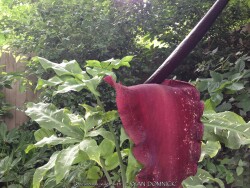
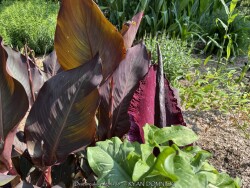
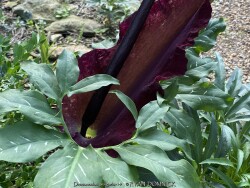

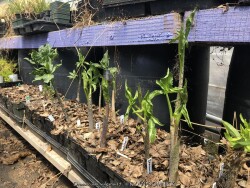
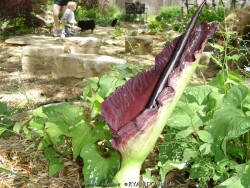
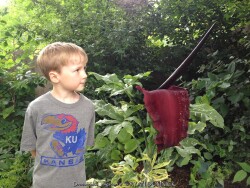
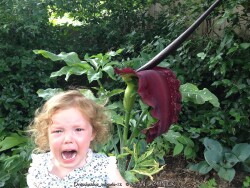
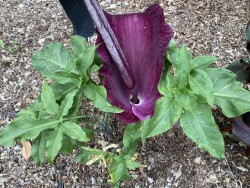
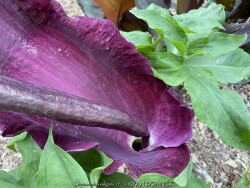
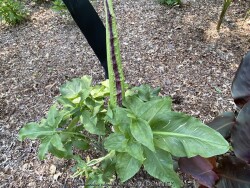
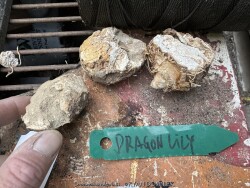
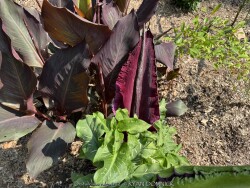
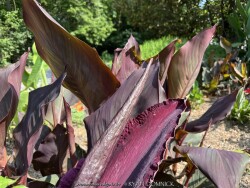
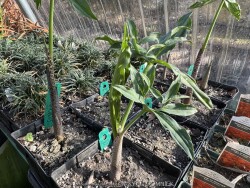
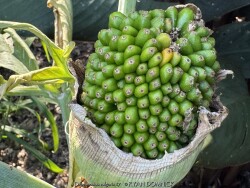
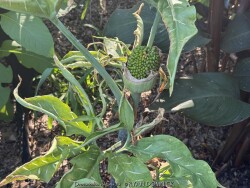
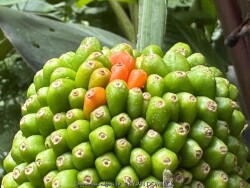
Plant Min Zone: 6a
Plant Max Zone: 10a
Sunlight: Full Sun, Part Sun, Shade
Water / Rainfall: Low, Average
Soil Quality: Average, Rich
Bloom Season: Summer
Flower Color: Maroon
Berry / Fruit Color: Orangish Red, Orange
Spring Foliage Color: Green
Summer Foliage Color: Green
Fall Foliage Color: None: Dormant
Evergreen Foliage: No
Winter Interest: No
Scented Flowers: Yes
Drought Tolerance: Medium, High
Wet-Feet Tolerance: Low
Humidity Tolerance: Medium
Wind Tolerance: Low, Medium
Poor Soil Tolerance: Rocky Soils
Height: 2' - 3'
Width: 2' - 3'
Growth Rate: Slow, Medium
Service Life: Medium: 3-5 years
Maintenance Need: Medium
Spreading Potential: Extremely Low
Yearly Trimming Tips: Bulbs Do Not Need Any Trimming: Let Foliage Die Back Naturally.
Plant Grouping Size: Specimen Planting of 1-3, Small Grouping of 3-5
Best Side of House: East Exposure, South Exposure
Extreme Planting Locations: Base of Retaining Wall Locations, Resistant to Rabbits
Ornamental Features: Large Tropical Foliage / Flowers, Exceptional / Colorful Foliage
Special Landscape Uses: None
Possible Pest Problems: Weed Competition, Root Rot Disease
Plant Limitations: May be Poisonous, Needs Thick Winter Mulch, Unpleasant Smelling Flowers / Foliage
Shippable in 2026: YES
Voodoo lily (Dracunculus vulgaris) is a perennial tuber generally grown as a curiosity for its interesting foliage. The single leaf consists of a stalk (petiole) with mottled pinkish-gray and olive green coloration. The single intricate leaf has horizontal sections giving it a tropical umbrella-like effect. Larger tubers (about the size of a grapefruit or larger) may produce a single "flower" in spring before the foliage appears. The "flower" is actually a large shiny purple to maroon ruffled spathe. When in bloom it produces an odor like a dead animal for 1 day. This is intended to attract the carrion flies that are its natural pollinators. It is possible to overwinter these in the ground in Kansas by placing a 6-12" mound of mulch over deeply planted tubers. New growth will usually be delayed until June but quickly regains full height and will get bigger each year; buried tubers are hardy to zone 6a. They can also be grown as a flowering summer patio plant. If growing as a potted plant and trying to overwinter, allowing the foliage to frost is ok, it will not kill the root system. However, do not allow the pot with rootball to freeze solid or go below 20 degrees for more than a few hours; move into a cold garage or basement over the winter with no watering. Cut back and allow to go dormant and place entire pot back out in April or May with a time-release fertilizer.